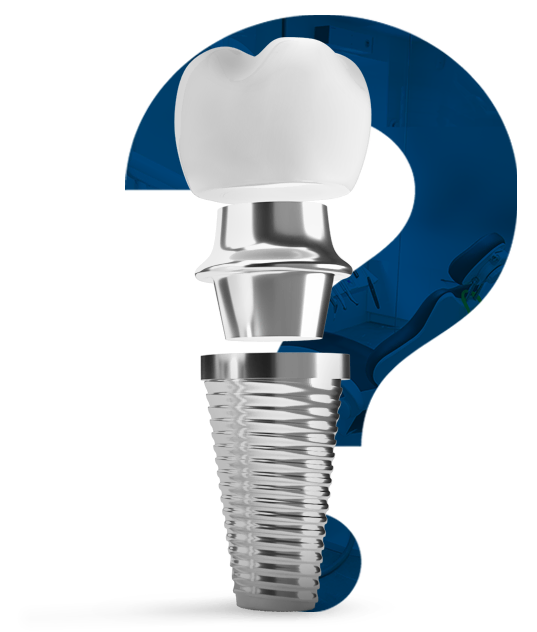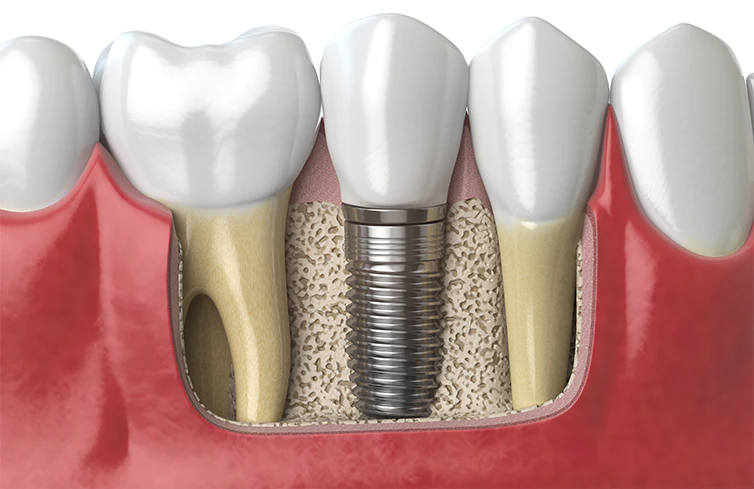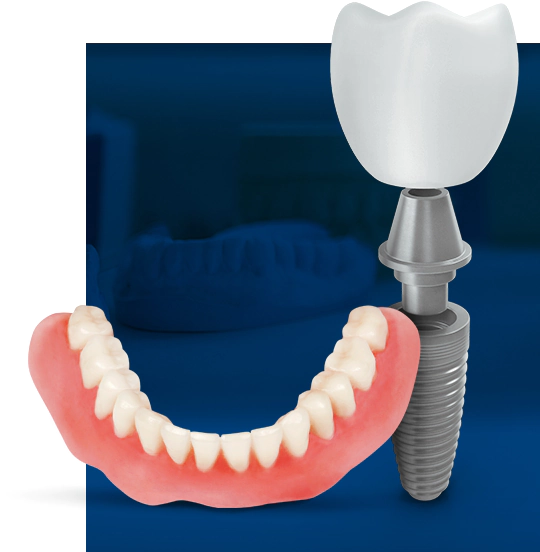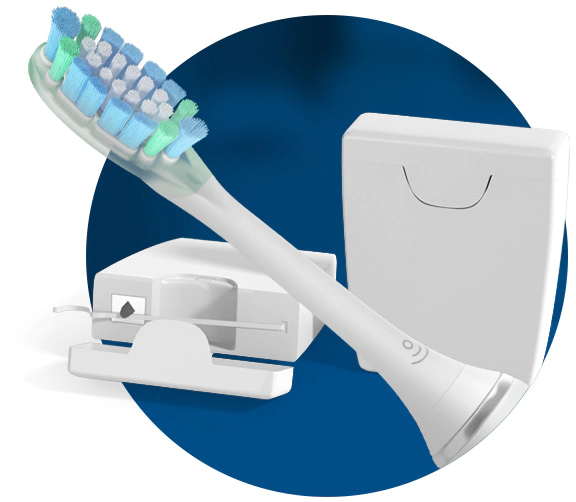Dental Implants
Dental implants are a popular treatment option to replace missing teeth. Implants are effective and provide a viable solution to restore your smile. Implants feel natural, blend in seamlessly with surrounding teeth, and are the closest thing to natural teeth. Dental implants can replace both a missing tooth or multiple missing teeth.

What Is a Dental Implant?
A dental implant is an artificial root in the shape of a post that is surgically placed into the jawbone. The implant is made of titanium: the same material used in many replacement hips and knees. Titanium is a biocompatible material that has the properties to pair well with human bone. Once the implant has been placed, healing typically takes several months. After the bone and implant have fused, the dental implants serve as anchors for replacement teeth, which can be crowns, bridges, or dentures. Implants can be used in a myriad of ways:

1
Single Implants:
Single implants are the most common application. If you are missing a single tooth, a properly placed implant and subsequent crown will restore the area and will feel like the tooth was never missing.
2
Multiple Implants:
If you are missing several teeth in a row, a number of strategically placed implants can support a permanent bridge.
If you have lost all of your teeth, a number of implants will need to be placed in the upper and lower jaw. Typically, 4- 6 implants are placed in each arch. Then, these can be restored with a full denture. The denture is secured to the implants, this is known as “All on Four” or “Same Day Smile.” It is also possible to restore the implants with a series of individual crowns and bridges. These restorative options both restore your smile and chewing ability.
What Are the Components of Dental Implants?
Dental Implants Consist of Three Parts:
Implant: The titanium post that acts as a root for the new tooth. Implants are surgically placed into the jawbone.
01
Abutment: A connector that acts as a transition between the implant and the crown. It provides a base that will support and hold the crown.
02
Crown: The part of your tooth that you’ll be able to see. It is attached to the abutment. Generally, the crown is made from porcelain or zirconia.
03
What Is the Procedure?
Receiving a dental implant is a surgical procedure. The dental implant is surgically inserted into the jawbone. The implant will either be “buried” and covered by gum, or be “exposed” and have a healing abutment screwed into it.
Next, the healing process can begin. This process is based solely on the bone and the surface of the titanium implant interacting with one another. Cells in the jawbone are attracted to the titanium and grow onto it (bone begins to fuse to the implant). This growing and fusing process is known as osseointegration. The osseointegration process usually takes somewhere between three and six months. Depending on the location of the implant in the mouth, a temporary tooth may be fitted so you can maintain normal daily activities.
Once the healing (osseointegration process) is complete and the implant has integrated to your jawbone, a permanent crown can be placed. This process usually take two appointments.

1
At your first appointment, the dentist will pick a shade to determine the color of the final crown. Then the healing abutment is removed and an impression post is inserted in its place. An impression is taken of the implant and surrounding teeth. The healing abutment is replaced. The impression is then sent to a dental laboratory where a custom abutment and final crown are fabricated. The abutment and crown are custom designed for your mouth, taking into account the teeth around the implant, all bite and jaw movements, and esthetics.
2
At the second appointment, the finished abutment and crown are attached to the implant. The healing abutment is removed and the custom abutment and crown are attached to the implant with a retaining screw. The fit, bite and esthetics are verified. There is now a new replacement tooth where one was missing!
Advantages Over Dentures or Bridges

Traditional dentures are not attached to teeth or bone, instead they rest on top of the gums that cover the jawbone. Dentures rely on the shape of your jawbone to create a suction and the muscles of your face to remain in place. This can, at times, make it difficult to eat or smile with confidence. Implants can be placed to drastically improve the fit and feel of dentures. An implant retained denture is anchored to the jawbone with implants. It is very stable and looks and feels like natural teeth.
Dental bridges span the gap created by one or more missing teeth. A typical dental bridge is comprised of one or more artificial teeth that are held in place by dental crowns. Bridges are an acceptable treatment option after tooth loss. However, they rely on neighboring teeth for support. Implants can be placed in the areas of missing teeth and be restored individually. There is no need to rely on the neighboring teeth. Implants are a less disruptive option.
How Long Do Dental Implants Last?
Dental implants can last many years. Good oral hygiene and proper care are key factors in the longevity of dental implants.
Proper care of implants includes wearing a night guard. Since implants are fused to the jawbone, they absorb forces differently than natural teeth. Clenching or grinding habits are more damaging to implants, so wearing a night guard helps protect them.


What Is the Maintenance of Implants?
Consider your replacement teeth to be the same as natural teeth. They require the same daily brushing and flossing, and the same amount of regular checkups. Just like your natural teeth, the better you take care of your replacements, the longer they will last.
Replacing missing teeth minimizes these problems. Unlike removable appliances such as partials or dentures, crowns and bridges are cemented in place. Once they are properly fitted, they act and feel like the natural tooth that was lost.
Reasons to Get
Dental Implants?
Dental implants help maintain the shape of your face, as well as prevent bone loss in the jawbone.
Implants are easy to clean because they resemble the shape and structure of natural teeth. Unlike bridges, they do not require any special cleaning– you can just brush and floss them like you would your natural teeth.
Unlike dentures, which can feel wobbly or uncomfortable, implant-supported replacement teeth feel just like your own teeth!
